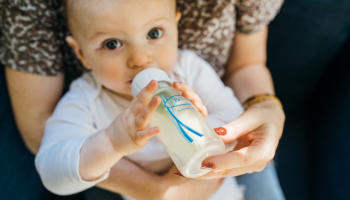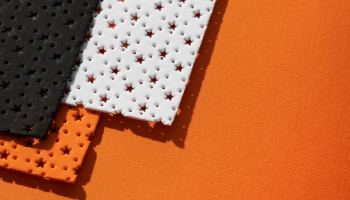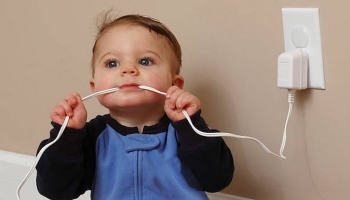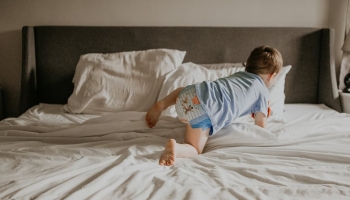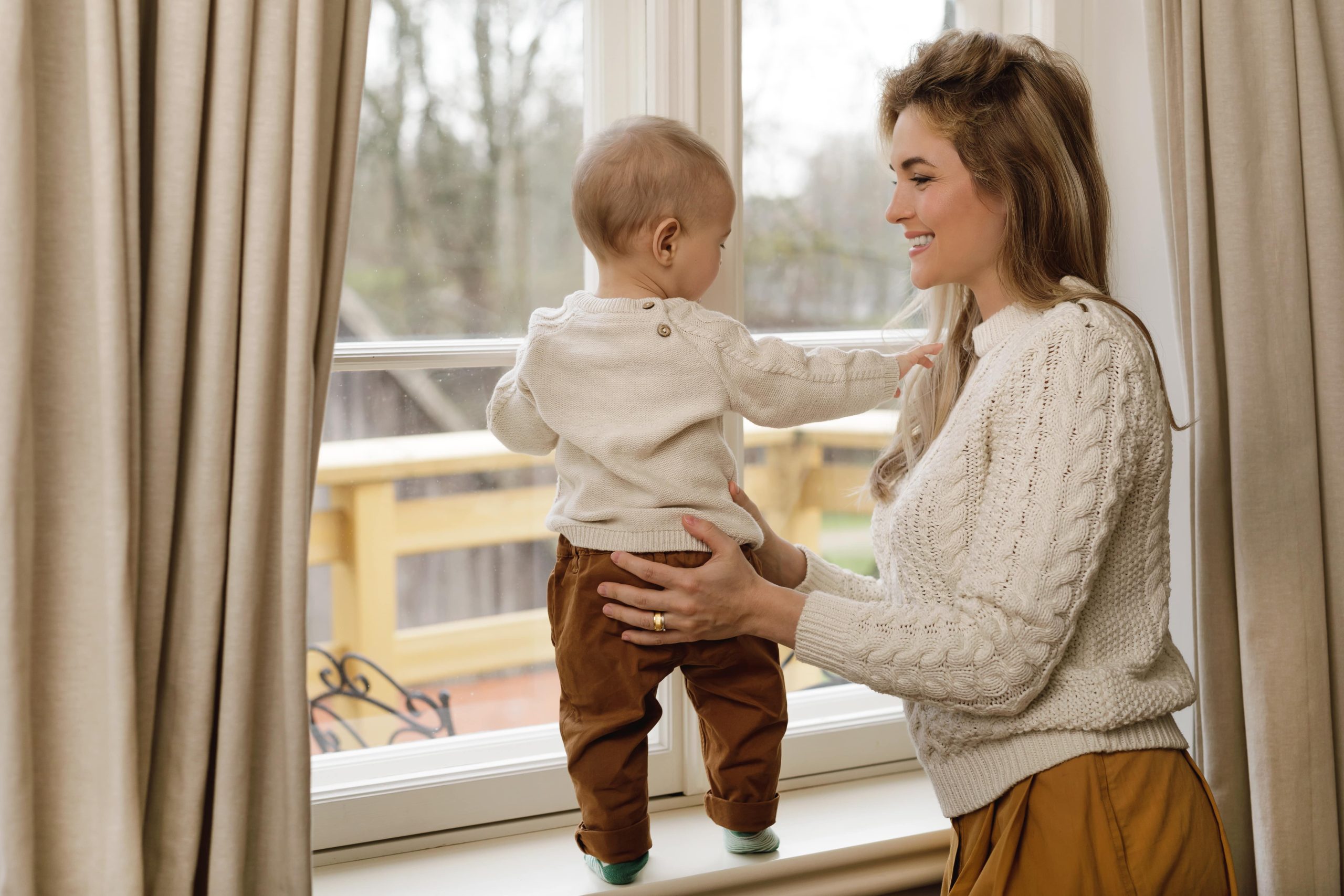
Baby jumpers can be an exciting and entertaining way for babies to engage their muscles and explore their surroundings. But then, it’s essential to introduce them at the right time to ensure your baby’s safety and well-being.
Sadly, most new moms find it challenging to identify the appropriate time to get their baby in a jumper to support their physical development.
A jumper is designed for babies who have achieved optimal head and neck control, and this typically happens when they are between 5 and 6 months old. Hence, it’s generally safe to use baby jumpers for 6-month-old babies. However, you must ensure your baby doesn’t sleep or feed in a jumper to minimize the risk of Sudden Infant Death Syndrome (SIDS).
What Age Can a Baby Go in Bouncer Jumper?
With a baby jumper, your hands may be freed up to do other things while your baby burns off some of their energy. But how old should they be before they begin bouncing? When can a baby use a jumper toy?
The appropriate age for a baby to start using a jumper can vary depending on their individual development and physical capabilities. But as a general recommendation, babies should not be placed in a jumper until they have neck and head control. Six-month-old babies may use a jumper since they typically have complete head control.
Other milestones that must be met before you introduce a jumper to your baby are as follows:
- Sitting Unassisted: Another essential milestone is the ability to sit unassisted. Before using a jumper, your baby should be able to maintain a stable sitting position without falling over. This skill is generally acquired around 6 to 8 months of age.
- Leg Strength: Since the primary purpose of a baby jumper is to allow them to bounce and use their legs, your baby must develop sufficient leg strength to use the device. They should be able to bear weight on their legs and push against a surface. This milestone is usually achieved around 4 to 6 months of age.
Can a 4-month-old Use a Jumper?
As mentioned earlier, the optimal time to use a jumper depends on your baby, how well they can keep their head up, how much upper body support they require, and the product you’re using. It all comes down to personal preference. Some baby tends to have a strong head balance when they are 4 months old.
How to Use a Baby Jumper Safely
While baby jumpers offer your little one a great source of entertainment and allow you to handle other house chores, it’s crucial to apply the following safety tips while using the device:
Choose the Right Jumper
First and foremost, ensure your preferred baby jumper meets the general safety standard. Is it appropriate for your baby’s age? How secure and stable is the design? What is the jumper type; Is it a stationary baby jumper, wheeled jumper, or doorway jumper? How reliable are the safety strap fasteners? These, among others, are some safety questions you must answer to determine the best baby jumpers on the market. Whichever choice you make, note that the American Academy of Pediatrics (AAP) does not recommend doorway jumpers or baby walkers with wheels as they pose higher injury risks. A stationary jumper is safer.
Get Your Timing Right
Only introduce a baby jumper once your baby has good head and neck control, can sit unassisted, and has developed sufficient leg strength. This is typically around 5-6 months, but every baby is different, so observe their readiness and get your timing right.
Moderate the Time Your Baby Spends in a Jumper
Avoid extended sessions in the jumper. Limit usage to short periods, usually 15-20 minutes once or twice daily. The time your baby spends on the floor in a safe environment exploring freely and playing is more conducive to their motor, sensory, and cognitive development.
Supervise Regularly
Never leave your baby unattended while using the jumper. Keep a watchful eye on them to prevent accidents. Also, check the jumper regularly to ensure all the safety features are intact and functioning. Should your little one fall asleep in a bouncer, gently transfer them to a secure, flat sleeping area such as a crib, bassinet, or playard.
Use the Jumper in an Open Space
Ensure the jumper is placed in a spacious and level area. Keep it within your view for safety; your baby will also be delighted to see you nearby. Keep any potential choking hazards, such as window-blind cords or loose items near the tray, out of reach.
Watch the Design
Please make sure the jumper’s design is safe for your little one. The jumper seat, for instance, should be designed to prevent easy climbing or falling out. Opt for a jumper with a soft, secure seat, and have the springs or metal pieces covered to reduce pinch risks.
Adjust Height Positions Appropriately
Ensure the jumper’s height is adjusted to your baby’s size, allowing their toes to touch the ground lightly.
Stick to The manufacturer’s Instructions
Don’t install or use a baby jumper without carefully reading the manufacturer’s instructions.
Pay Attention to Recall Notices
While most reputable e-commerce platforms comply with the safety standards of the Consumer Product Safety Commission (CPSC), you have to verify that the jumper you are about to buy is not on any product recall list.
Are Baby Jumpers Bad?
Short periods of use, between 15 to 20 minutes and not more than two sessions a day, can provide the infant with a great deal of enjoyment. Still, it may be detrimental to your baby if utilized improperly or for an extended period. Some disadvantages of baby jumpers, if misused, include:
Delayed Motor Development
Using a baby jumper for lengthy periods may be detrimental to your baby’s motor development and interfere with their natural development of motor skills like crawling and walking. Spending too much time in a jumper can limit opportunities for babies to explore their environment naturally and unrestrictedly.
Strained Hips and Spine
Improper use or extended use of baby jumpers can strain a baby’s developing hips and spine. The repetitive bouncing motion and the posture maintained in a jumper may not be optimal for their growing bodies in the long run.
Injuries
Exercise jumpers can also cause significant injuries to your baby, such as head or limb injuries from falls, fingers getting trapped in the springs, collisions with door frames or furniture, and the possibility of other children or pets pushing your baby.
Limited Floor Play
Baby jumpers, if used excessively, can restrict the important floor time that babies need for free movement, sensory exploration, and developing their motor skills. Babies naturally need to crawl, roll, and engage in tummy time on the floor; you shouldn’t deny them that experience.
Benefits of Baby Jumpers
The growth of muscle
Any child’s bones and muscles are delicate. When your baby is still an infant, this is especially true. Muscle mass and bone density increase with age. However, they aren’t able to build their strength. Your child’s muscles will grow if you take specific actions to help them do so.
This may be done with the help of a high-quality baby jumper. Children may play with toys and bounce about in a baby bouncer. Your child’s bones and muscles will become stronger as a result of these activities. Even simple activities such as walking and sitting may help train the body to handle minor injuries with little discomfort.
Entertainment
A baby’s greatest want is to be amused. A baby’s primary activities include feeding, playing, and sleeping throughout the first few years of life. As a parent, you need to keep an eye out for all three of these factors. Your child’s growth and development will be negatively impacted if anything is lacking.
Jumpers for babies are a great way to keep your baby entertained. Most jumpers also come with toys your baby would love to play with when they get weary of leaping. This enables them to spend meaningful time with their loved ones and always be amused.
Walking warm-up
Your baby will utilize the lower body to keep up with the movement when bouncing and hopping. Learning to balance and stand on one’s feet is one of the most critical aspects of walking. At first, it’s common knowledge that babies learn to walk carelessly, but this may be pretty hazardous since they might fall and injure their heads or arms.
By learning how to walk efficiently and steadily, the baby jumper may be a significant aid in this regard. As the saying goes, “practice makes perfect,” so your baby’s limbs will become more robust and more flexible the more they bounce about. For this method to be safe and successful, choosing a baby jumper that fits your child’s size and weight is necessary.
It gives parents a chance to do some housework
If you’re a parent who wants to get some work done around the home during the day, you’ll need to find a method to keep your baby occupied while you do it. Baby jumpers are fantastic at this and can keep your baby comfy for extended periods while you’re doing some housework.
Baby sleeps considerably more quickly
Getting up in the middle of the night because your baby is crying isn’t fun. Make sure to acquire a baby jumper so that you can enjoy the peaceful slumber of your child. Because a baby jumper may be used for up to 30 minutes a day, you should enable your child to use it before bedtime for them to become weary and sleep more soundly than usual. There is a good chance that they won’t wake up when they are sleeping as a result of the physical exercise.
So, What is the Difference Between a Baby Bouncer and a Jumper?
Often used interchangeably, a baby bouncer and jumper slightly differ design-wise. A baby jumper is designed to allow babies to bounce and jump in an upright position. It typically consists of a suspended seat attached to an elastic strap or a frame, allowing a baby to use their legs to push off the ground to create a bouncing motion.
On the other hand, a baby bouncer is a seat that allows infants to bounce gently in a seated or reclined position. It usually has a soothing or vibrating motion to comfort the baby. Unlike a baby jumper, a baby bouncer doesn’t involve the baby pushing off the ground and bouncing independently. Hence, newborns can use bouncers for short periods and under close supervision. Pediatricians, however, discourage using a bouncer as a baby’s sleeping space since such a use case could increase the chances of SIDS.
When Can Babies Stop Using Jumpers?
Most manufacturers typically specify a weight limit for their jumpers, which falls within the range of 25 to 30 lbs or until your baby can walk independently. However, the U.S. Consumer Product Safety Commission considers it safe to use jumpers or bouncers until your baby starts rolling over or starts attempting to pull themselves up using the sides of the toy.
What are the Alternatives to Baby Jumpers?
As we pointed out earlier, baby jumpers are not always safe, especially door frame or wheeled types. According to research published in Pediatrics, there were more than 230,000 baby walker-related emergency room visits over a 24-year period (between 1990 and 2014). Many of these injuries resulted from children (15 months or younger) moving faster than expected, gaining access to unsafe or unsupervised areas like stairs or pools before parents realized they were missing.
That said, if you consider baby jumpers too risky for your baby, here are some safer alternatives to jumpers that can provide similar benefits and entertainment for your little one’s development:
Stationary Activity Center
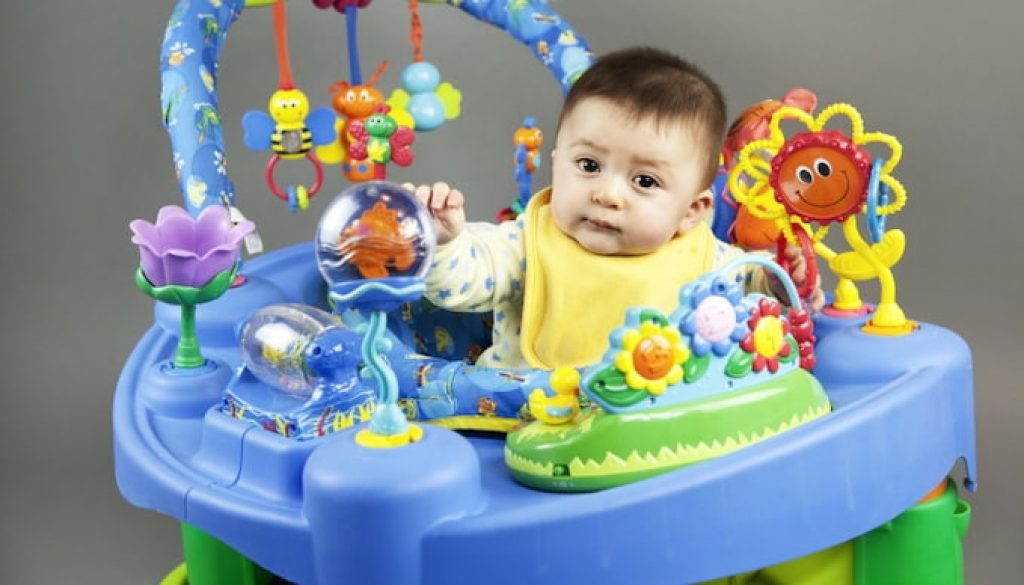
Stationary activity centers are similar to traditional baby walkers but without wheels. They allow babies to stand and play surrounded by toys and activities. We recommend these since they offer a safe environment for exploration and sensory stimulation without the bouncing motion. A good example of a stationary activity center is an exersaucer, which has different parts, including a seat, base, toys, and a bar that goes around the baby.
Activity Gyms
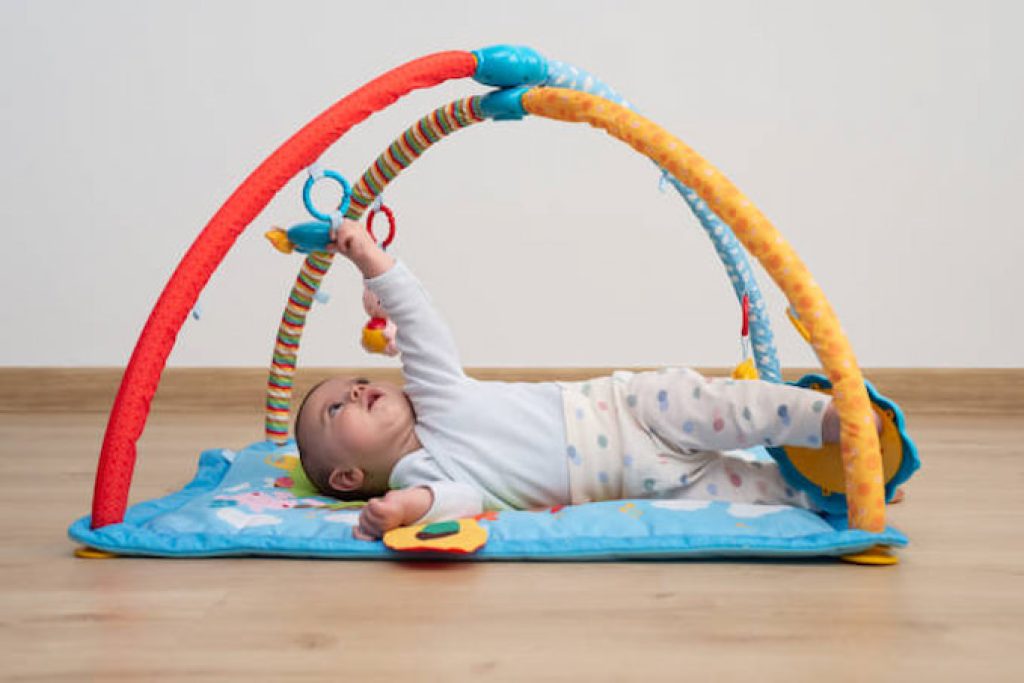
Activity gyms are another excellent alternative to baby jumpers, considered safe and designed for young infants to engage in floor-based play. They typically have a soft and padded mat with arches or bars overhead. Hanging toys, rattles, and sensory elements are often attached to the arches, encouraging the baby to reach, kick, and explore. These play mats provide a safe and comfortable space for babies to develop their motor skills, sensory perception, and hand-eye coordination.
Playard
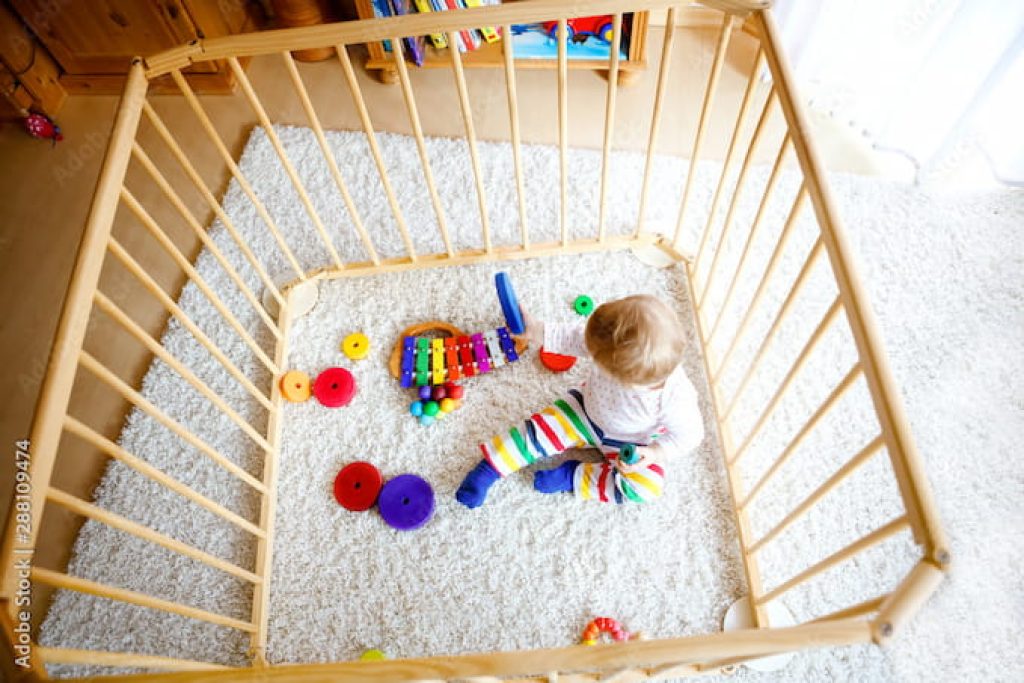
This enclosed area creates a secure and contained space for babies and toddlers to play. Playards typically have mesh or fabric sides and a floor, offering a safe place where children can move around, play with toys, and rest. Parents who need a hands-free moment or to keep their children contained for a short period can benefit significantly from having their little ones in this safe space.
Baby Push Walkers
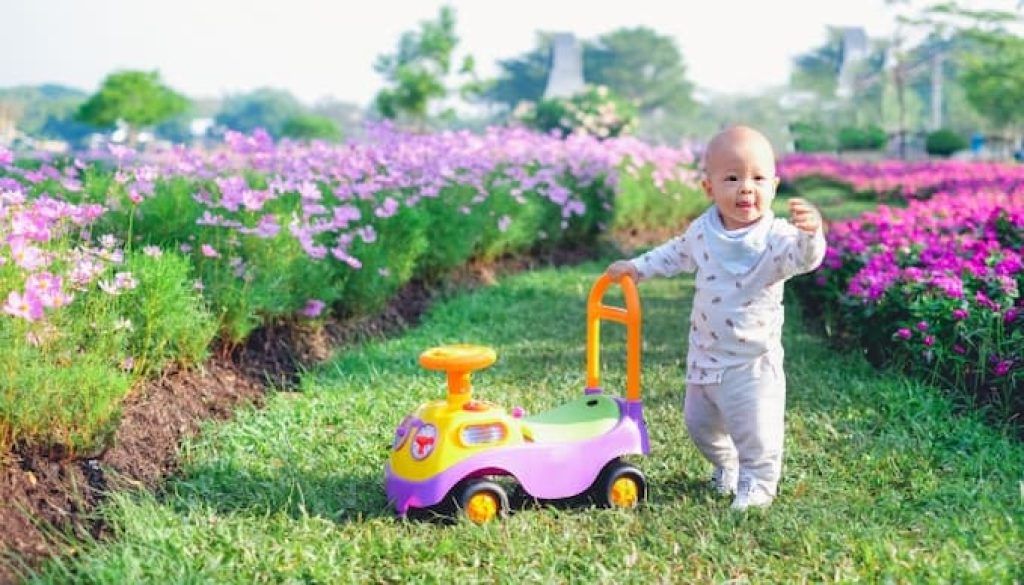
While anything with wheels is not recommended for infants, a push walker can be the choicest alternative for babies once they start walking independently. It is crucial to continuously monitor your toddler whenever they wield a push walker. Accidents can still happen since they haven’t fully mastered the art of walking!
NOTE: Since push walkers can delay a baby’s ability to learn how to walk independently and can cause accidents among infants, it is not recommended for younger babies yet to walk independently.
Conclusion
Baby jumpers can be a fantastic tool to entertain and exercise your little one, but it’s crucial to introduce them at the right age and follow safety guidelines. Always prioritize your baby’s safety and well-being while using a jumper, and remember that it’s just one of many ways to engage and stimulate your child as they grow and develop.
Frequently Asked Questions
Are Doorway Jumpers Safe for Babies?
Doorway jumpers can pose safety risks for babies if not used correctly or if the baby is not developmentally ready. Infants have relatively large heads compared to their bodies, and their necks are not fully developed or strong enough yet. This makes head injuries common when using a door frame jumper. Additionally, swinging too vigorously can also risk damage to their tender necks.
Are Baby Jumpers a Good Idea?
Jumpers provide entertaining moments for short durations (15 to 20 minutes, twice daily). Still, frequent or prolonged usage can lead to imbalances in muscle development or potentially cause issues to your baby’s hips and spine.
Most pediatricians don’t recommend baby jumpers because many parents don’t follow the manufacturer’s instructions carefully or apply the necessary safety measures, leading to preventable accidents.
Baby jumpers are only good when used correctly, with all safety measures strictly observed. Moderation and supervision are essential to ensure their safety and benefits for your little one.
Do Baby Jumpers Cause Bow Legs?
No, the baby jumper cannot cause a bow leg, but it can cause some hip development issues if the baby is left too long on the jumper. The child’s hips are improperly aligned because of the cloth seat they’re sitting on. Hip dysplasia, a deformity of the hip socket, may be exacerbated in this posture, resulting in pain and discomfort.
At what age do babies need jumpers?
Babies can generally start using jumpers when they have good head and neck control, and can hold their head up steadily. This typically occurs at around the age of 4-6 months. However, it’s important to check the specific age and developmental recommendations from the manufacturer of the jumper you’re considering, as they can vary.
Can newborns use baby jumpers?
No, it’s not advisable to use jumpers for newborns. It is generally recommended that your baby begins utilizing the jumper when they are able to keep their head up and strong without support. Instead of using baby jumpers for newborns, you can go for baby bouncer seats designed with a stationary frame and straps to ensure that your baby is safely seated with adequate head and neck support.
Do baby jumpers delay walking?
Baby jumpers might contribute to delayed walking if used excessively. While jumpers allow babies to bounce and move their legs, this doesn’t mirror natural walking movements. Overuse can potentially limit the development of essential skills like crawling and walking, which are crucial for proper motor development.
Should baby feet be flat in a jumper?
In a jumper, a baby’s feet should touch the ground, but they need not be entirely flat. Ideally, the toes or the balls of the feet should make contact with the floor, allowing the baby to push off for bouncing. This position helps ensure the jumper supports the baby’s development and use of leg muscles appropriately.



